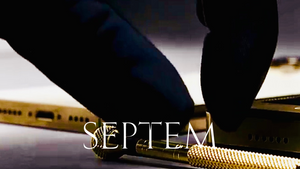Where did the term avant-garde come from?
Surprisingly, the term “avant-garde” was coined in the military language as a word used to the troops who are at the front line and first to make contact with the enemy.
It is challenging to define the term "avant-garde" clearly because there were many avant-garde programs and groups that labeled themselves with the ideology. Unfortunately, “avant-garde” as a concept does not invite a traditional or an over-arching definition. As a matter of fact, to define the term itself would be contradictory to the essence the term represents.
In a nutshell, “avant-garde” refers to the spirit of pioneering.
Avant-garde is a metaphor for "vanguards" in figurative terms. The avant-garde, in modern times, is the leader of progress against tradition. Avant-garde as a notion represents the unexpected, unheard of and unprecedented. Avant-garde is a break with conventional rules. On a macro-level, avant-garde designs embody a sense of departure, adventure, and bravery.
More specifically, the spectrum of avant-garde expressions ranges from artistic movements to political movements.
Mainly taking place in the 20th century, avant-garde movements shared a strong orientation towards progress and were marked by a special type of radicalism towards the political and artistic status quo.
Avant-garde and the luxury world
With the goal to disrupt the industries and to make waves in the traditional world, it is only natural that the art and design world embrace the concept of “avant-garde” with open arms, for it is asked from designers and artists to lead new and eye-catching trends.
In the 20th century, the “Antwerp Six”, six talented fashion designers rose to stardom for their avant-garde fashion design endeavors.
Coming from Belgium, after finishing education from the Royal Academy of Fine Arts of Antwerp, six graduates turned up in the London fashion scene. Their collective appearance in a foreign country created a scene. Marysia Woronycka, a lady specialized in public relations back then, took note of them. Due to the unpronounceable nature of their names in the English language, they were together referred to as "the Antwerp Six" by the English press.
Historically, London was home to a movement that expanded fashion beyond its limits, spilling inspirations to fine art and architecture. Given the influence of the fashion scene in the city, the “Antwerp Six” rose to prominence for their radical, ground-breaking, and revolutionary design practices.








